Ordering number:AS24016
Katana: In Shirasaya with Koshirae (NBTHK Tokubetsu Hozon Token)
Signature: ◻︎◻︎ 22 Nen 5 Gatsu Hi(Unknown below)
(Kiritsuke Mei) Tenpo 9 Nen 8 Gatsu Jo Kore
(attributed to Den Shizu)
◻︎◻︎四年五月日
(切付銘)天保九年八月上之(伝志津)
We divide 4 sections for each sword as Saijyo Saku, Jyojyo Saku, Jyo Saku, and Regular Saku.
This work is ranked as Jyojyo Saku.
Polished.
Blade Length: 66.7 cm (26.26 in)
Curvature: 1.5 cm (0.59 in)
Mekugi Hole: 1
Width at Base: 2.52 cm (0.99 in)
Width at Tip: 1.30 cm (0.51 in)
Thickness: 0.51 cm (0.20 in)
Sword Weight: 480 grams (1.06 lbs)
Era: Late Kamakura to early Nanbokucho period
Shape: O-suriage mumei with curvature, short kissaki, and slender body.
Jigane: Well-forged itame-hada with active chikei and visible utsuri.
Hamon: Ko-nie deki with deep nioiguchi and irregular gunome midare, with prominent sunagashi and kinsuji.
The boshi has a deep nioiguchi with a double temper line, ending in a ko-maru, and the yakiba extends long into the shinogi-ji.
Features: Originally, Shizu refers to the name of a place in Mino Province.
When Masamune moved there and started making swords, Mino Saburo Kaneuji took the name Shizu.
Therefore, Shizu usually refers to Kaneuji.
Historically, he is one of the ten disciples of Masamune and his work closely resembles Masamune's style.
Koshirae: Han-dachi Koshirae
Tsuba: Mokko-gata shape, made of shakudo with floral and dragonfly designs in high relief and gold inlay by Ishiguro Moritsune with his Kao.
Fuchikashira: Shakudo nanako-ji with phoenix and floral motifs in high relief and gold inlay.
Menuki: Shakudo with pheasant design in high relief and gold inlay.
Kozuka: Shakudo nanako-ji with two pheasants flying among bamboo, in high relief and gold inlay.
Kogatana: Signed Mino no Kami Fujiwara Kanezane.
Kogai: Shakudo nanako-ji with two pheasants flying among bamboo, in high relief and gold inlay.
Kojiri: Shakudo nanako-ji with flying pheasant and plants, in high relief and gold inlay.
Kurikata: High relief and gold inlay design of pheasants and plants.
Seppa (2 pieces): Made of copper with gold wrapping.
The gold used in the seppa is soft, preventing scratches when the tsuba and blade are held together.
Aoi Art’s Comment: Shizu refers to Kaneuji, one of Masamune's ten disciples who was active in the late Kamakura to early Nanbokucho period in Shizu, Mino Province.
The well-forged itame-hada and active chikei are notable.
The signature mentions ◻︎◻︎ Fourth Year, Fifth Month, and August of the Ninth Year of Tenpo, indicating that the blade was shortened in Tenpo 9 (1838).
The meaning of ◻︎◻︎ Fourth Year, Fifth Month is unclear.
The koshirae is splendid, and the sword attributed to Shizu is remarkable, highly recommended.
NBTHK Tokubetsu Hozon Token
Aoi Art estimation paper
Whole Oshigata
Auction Starting Price:2,500,000JPY
Place Bid
Related Items:
 Katana :Echizen Koku Shimosaka Sadatsugu (37th NBTHK Juyo Token)
Katana :Echizen Koku Shimosaka Sadatsugu (37th NBTHK Juyo Token)
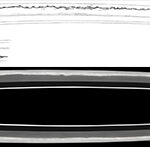 Katana: Hoki Kami Ason Masayuki
Katana: Hoki Kami Ason Masayuki
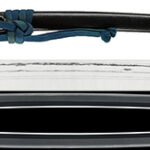 Katana: Mumei (attributed to Ryumon)(NBTHK Tokubetsu Hozon Token)
Katana: Mumei (attributed to Ryumon)(NBTHK Tokubetsu Hozon Token)
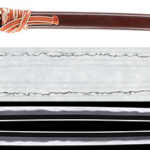 Katana: Hizen Kuni Kawachi Daijo Masahiro (first generation)(61st NBTHK Juyo Paper)
Katana: Hizen Kuni Kawachi Daijo Masahiro (first generation)(61st NBTHK Juyo Paper)
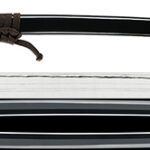 Katana: Tegarayama Kai Kami Masashige(NBTHK Tokubetsu Hozon Token)
Katana: Tegarayama Kai Kami Masashige(NBTHK Tokubetsu Hozon Token)
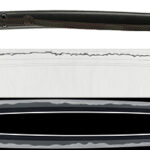 Katana: Izumi Kami Kunisada (Inoue Shinkai)(NBTHK Tokubetsu Hozon Token)
Katana: Izumi Kami Kunisada (Inoue Shinkai)(NBTHK Tokubetsu Hozon Token)







